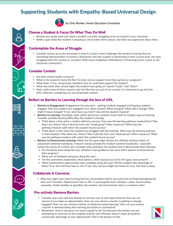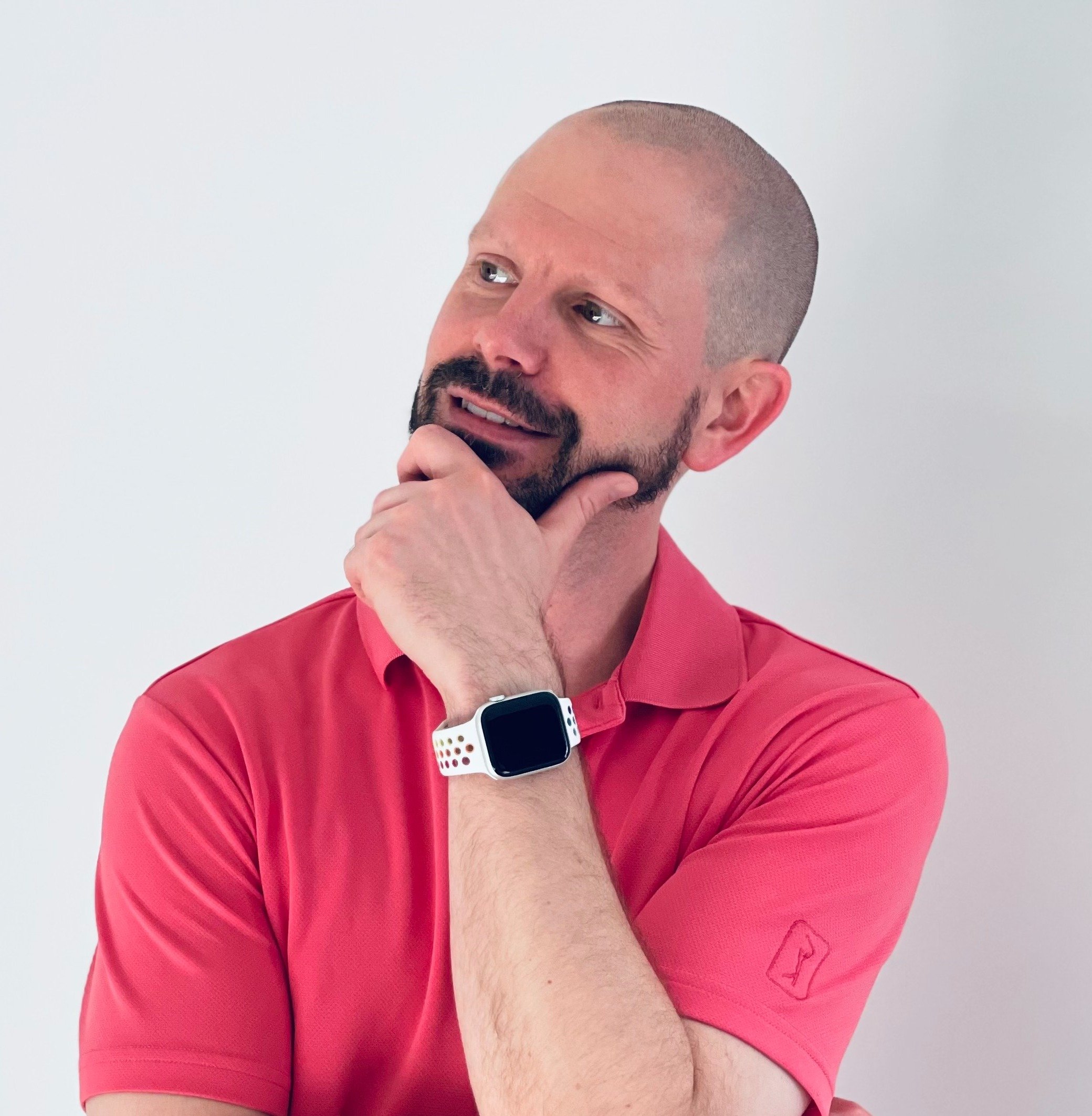How do we better bring the concept of empathy into the design thinking process?
As a teacher and UDL practitioner, a key focus of mine is to remove barriers for students. This sounds easy in theory but I have been feeling that I was needing more to really understand what my students needed when thinking about removing potential barriers in my class. After some reflection, I discovered that the question I was asking myself was a little too glass-half empty vs. half full. I was focused on what wasn’t working instead of tapping into what is working well.
So when looking at a student that is struggling, instead of focusing on what is going wrong, what barriers need to be removed, etc, instead, highlight the positive. Every student has something going right for them - start there and consider how can I replicate, duplicate and expand on that so that the things that are working can show up in other places.
 This is a different way to think about removing barriers. Don’t get me wrong, I still spend time considering what a student cannot/isn’t doing, too. But by looking at both their strengths and their struggles, I have found improved success in my interventions. And I challenge you to try this exercise (Download a copy) and see how taking an empathetic approach not only will help you expand on what is working in your class but also brings another level of reflection and connection to your students.
This is a different way to think about removing barriers. Don’t get me wrong, I still spend time considering what a student cannot/isn’t doing, too. But by looking at both their strengths and their struggles, I have found improved success in my interventions. And I challenge you to try this exercise (Download a copy) and see how taking an empathetic approach not only will help you expand on what is working in your class but also brings another level of reflection and connection to your students.
Getting Started
Look at your grade book and select one student who is currently struggling and falling behind in your course then follow the steps below.
Don’t worry - this is not an exercise that you would do for each student that is not reaching their highest potential. What you will uncover through this exercise is what one student may be experiencing, others may be experiencing as well. So start by making these steps with one student in mind, and you’ll see the outcomes of all will flourish in the classroom. Remember, what is needed by the few is good for the many.
Contemplate the Areas of Struggle
When looking at this student’s experience in your class, start by focusing on this student's strengths: what is this student amazing at, what makes them unique, and what do you appreciate about them?
Then consider the factors of why their current grade is what it is. What challenges is this student facing that is preventing their demonstration of mastery? Brainstorm why this student is performing at their current level. Are they struggling with:
- The content or concepts?
- With work completion?
- Attendance?
- Connecting to the course or to the classroom community?
Consider Context
Once you have nailed down the area of struggle for your student, consider the outside factors that may be affecting your student inside the classroom.
- Are there mental health concerns?
- What is the student's home life like? Do they receive support from their parents or caregivers?
- What other, if any, school team members have or could help support the student?
- What else other than school might this student have going on? Sports? Clubs? Job? Other?
Note, while some of these reasons may feel like they are out of our control, it is important to go into the UDL reflection process considering any and all possible reasons.
Reflect on Barriers to Learning through the lens of UDL
-
When implementing Universal Design for Learning in your class, barriers to learning are removed and options and choices are provided, empowering students to take control of their own learning. Review the outcomes of steps 1 and 2, and consider the barriers they are facing - whether they are barriers to engagement, learning, or demonstrating knowledge.
- Barriers to Engagement: Engagement has two parts - getting students engaged and keeping students engaged. Was the student ever engaged? If so, what worked? What changed? When did it change? Why might it have changed? If not, what have you tried? How did the student respond?
- Barriers to Learning: Variability, both within and across students, lends itself to multiple ways of learning. Consider possible learning difficulties this student is having:
- Think about a time when a student did have success. How was the learning pathway created then? Was there any choice? Was it directly from you? Small group? Other resources? What was the pathway/medium with which this student found success?
Think about a time when this student has struggled with the learning. What was the learning pathway in that situation? Was there any choice? Was it directly from you? Small group? Other resources? What was the pathway/medium with which this student found success?
- Think about a time when a student did have success. How was the learning pathway created then? Was there any choice? Was it directly from you? Small group? Other resources? What was the pathway/medium with which this student found success?
- Barriers to Demonstrate Learning: While the firm goal might dictate the ultimate medium/choice of assessment (method standards), it doesn’t always provide the medium (content standards) - especially across the course of a whole unit. Consider what pathways the student had to demonstrate their learning:
- For formative work along the way, whether it was graded or not, were there options to demonstrate their progress?
- What sort of feedback was given along the way?
- For the summative assessment, what options, while staying true to the firm goal, were present?
- What reassessment opportunities were available along the way? Did the student take advantage of these? If so, how did they help or not? If not, why not (you might not know for sure, that that is okay).
Collaborate & Converse
It’s easy to jump in and begin revising or redesigning your next unit based on your reflection so far, but before you do, consider who else you can bring into the conversation (i.e. Department Chair or API, a course/grade-team member, a dean, social worker, counselor, family member or guardian, the student, an instructional coach). Tip! Do this exercise with a colleague and when you get to step 4 - cross-check your personal analysis and help to highlight and review each other’s work.
Proactively Remove Barriers
When doing this review, it may feel overwhelming how you can truly make a change. Take it one day at a time. For your next unit, uncover one of each type of barrier (To engagement, to learning, and to demonstrate learning) that you can remove if you make adjustments.
- How can you remove a barrier to getting or staying engaged?
- How can you remove a barrier to doing the actual learning?
- How can you remove a barrier in demonstrating their learning (formative or summative)?
Remember, what is necessary for some is good for all! Just because the barriers you are attempting to remove came out of this empathy activity and reflection doesn’t mean all students cannot take advantage of your adjustments! That is the beauty of UDL.
Continue Your Learning. Reach all learners through UDL and Inclusive Practices.




